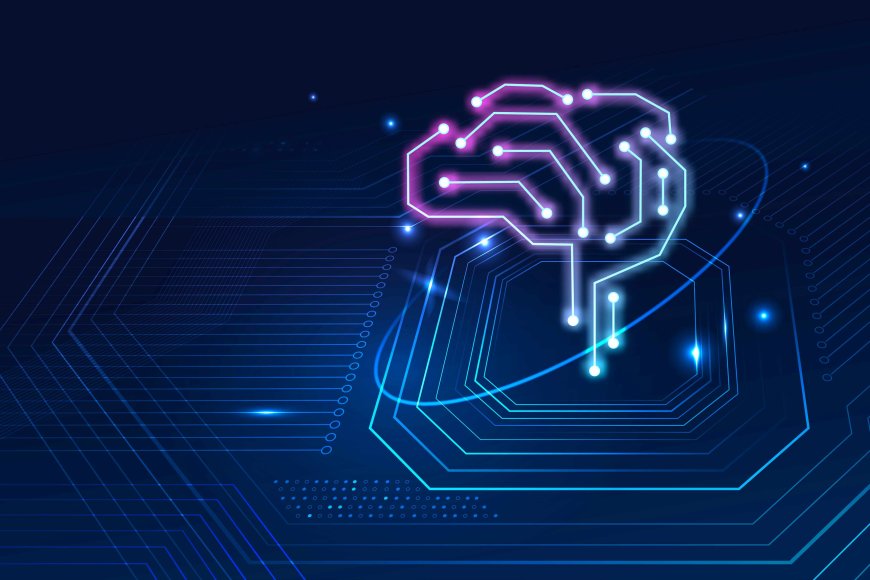What Are Enterprise Chatbots And How Do They Work?
In this blog, we’ll explore what enterprise chatbots are, how they work, and why they’ve become essential to today’s digital business ecosystems.

In the fast-paced world of modern business, efficiency and automation are key to staying competitive. One of the most impactful tools revolutionizing business communication and customer service is the enterprise chatbot. Unlike traditional bots, enterprise chatbots are built to handle complex workflows, large-scale integrations, and diverse user needs within large organizations. In this blog, we’ll explore what enterprise chatbots are, how they work, and why they’ve become essential to today’s digital business ecosystems.
What Is an Enterprise Chatbot?
An enterprise chatbot is an advanced, AI-powered software application designed to simulate human-like conversations and assist with various tasks within large-scale organizations. These bots are integrated with enterprise systems such as Customer Relationship Management (CRM), Enterprise Resource Planning (ERP), and Help Desk software to provide efficient service across departments like HR, IT, sales, and customer support.
Unlike basic chatbots used on websites for FAQs or small customer queries, enterprise chatbots are equipped with Natural Language Processing (NLP), machine learning, and deep contextual understanding. They handle multiple use cases — from processing employee leave requests and resetting passwords to automating lead generation and handling customer complaints.
Key Features of Enterprise Chatbots
1. Advanced Natural Language Processing (NLP)
Enterprise chatbots understand user inputs not just by keywords, but through context and intent. They analyze sentence structure, semantics, and even tone to offer accurate responses.
2. Integration with Internal Systems
They connect with existing software like Salesforce, SAP, Oracle, and Microsoft Teams to provide real-time information and complete workflows within a single interface.
3. Multilingual Capabilities
Many enterprise bots are trained in multiple languages, enabling global organizations to offer seamless support across different regions and demographics.
4. Scalability
Enterprise chatbots are built to scale. Whether a company has hundreds or millions of users, these bots can manage interactions efficiently without degradation in performance.
5. Security and Compliance
Given the sensitive nature of corporate data, enterprise chatbots are designed with strong encryption protocols, role-based access controls, and compliance with industry standards like GDPR, HIPAA, and SOC 2.
How Do Enterprise Chatbots Work?
Enterprise chatbots operate using a combination of artificial intelligence, machine learning, and deep integrations. Let’s break down how they work:
Step 1: User Input Processing
When a user initiates a conversation, the chatbot uses NLP to interpret the query. It identifies the intent and extracts entities (e.g., names, dates, amounts) necessary to process the request.
Step 2: Intent Recognition
Using pre-trained models or custom training data, the bot maps the user input to a particular task or function — known as intent. For example, "I need to reset my password" triggers an IT support flow.
Step 3: Backend Integration
Once the intent is identified, the bot fetches or pushes data to backend systems. If integrated with the company’s HRMS, the bot could apply for leave on behalf of the employee.
Step 4: Response Generation
The bot generates a human-like response based on rules or AI-generated language, offering a solution, asking follow-up questions, or completing the task.
Step 5: Continuous Learning
Enterprise bots are designed to improve over time. They learn from user feedback, failed conversations, and new queries to enhance their understanding and accuracy.
Types of Enterprise Chatbots
1. Rule-Based Chatbots
These operate based on predefined rules and decision trees. While not as flexible, they are useful for tasks with clear processes, like booking a meeting room or submitting an IT ticket.
2. AI-Powered Chatbots
Powered by machine learning, these bots can handle open-ended conversations, learn from user interactions, and adapt to new scenarios with minimal human intervention.
3. Hybrid Chatbots
A blend of rule-based and AI-powered bots, hybrid models offer structured interactions with the flexibility of AI where needed.
Popular Use Cases of Enterprise Chatbots
1. Human Resources
Bots assist with onboarding, FAQs about company policies, applying for leaves, and accessing pay slips — all without the need for HR intervention.
2. IT Helpdesk
Employees can reset passwords, report issues, and receive real-time troubleshooting assistance, reducing ticket resolution time and helpdesk workload.
3. Customer Service
Chatbots provide 24/7 customer support, manage returns, answer product questions, and escalate complex issues to human agents when necessary.
4. Sales and Marketing
Bots qualify leads, book appointments, follow up with prospects, and even provide product recommendations — boosting productivity and conversion rates.
5. Internal Communications
They distribute important announcements, collect employee feedback, and facilitate knowledge sharing across departments.
Benefits of Enterprise Chatbots
1. Increased Operational Efficiency
Automating repetitive tasks reduces manual effort and allows human agents to focus on complex or strategic initiatives.
2. Enhanced User Experience
Enterprise chatbots ensure consistent, accurate, and fast responses, improving employee satisfaction and customer loyalty.
3. Cost Reduction
By minimizing the need for large support teams and enabling self-service, chatbots significantly reduce operating costs.
4. Round-the-Clock Availability
These bots offer 24/7 support, which is crucial for global enterprises operating in multiple time zones.
5. Data-Driven Insights
By analyzing chatbot interactions, businesses gain valuable insights into user behavior, preferences, and pain points.
Challenges and Considerations
1. Implementation Complexity
Enterprise chatbots often require complex integration with multiple backend systems, which can be time-consuming and resource-intensive.
2. Maintaining Data Privacy
Bots handle sensitive employee and customer data, making it critical to enforce strong data security and compliance measures.
3. Continuous Training
AI-powered bots need regular updates and training to stay effective and accurate as business processes evolve.
4. User Adoption
Encouraging employees or customers to shift from traditional channels to chatbots may require internal awareness campaigns and incentives.
Real-World Examples of Enterprise Chatbots
Several global enterprises have successfully implemented chatbots to streamline their operations:
-
IBM’s Watson Assistant helps financial institutions automate customer service while ensuring compliance.
-
H&M’s chatbot assists with online shopping, returns, and fashion recommendations.
-
Unilever uses chatbots for recruitment, screening applicants, and scheduling interviews.
These examples illustrate the flexibility and strategic value of well-integrated chatbot solutions.
Who Builds Enterprise Chatbots?
Developing an effective enterprise chatbot requires deep expertise in AI, backend integration, security, and UX design. Businesses often collaborate with a custom AI development company to tailor chatbot solutions that meet their unique workflows and compliance requirements. These companies specialize in understanding organizational needs and translating them into functional, intelligent, and secure conversational agents.
The Future of Enterprise Chatbots
Enterprise chatbots will continue to evolve as AI technology matures. Key trends shaping the future include:
-
Hyper-personalization: Bots will offer context-aware suggestions based on user profiles, behavior, and history.
-
Voice Assistants: Integration with voice platforms like Alexa for Business will expand bot accessibility.
-
Proactive Support: Rather than waiting for user queries, bots will initiate interactions based on predictive analytics.
-
Advanced Analytics: Bots will increasingly deliver actionable insights to business leaders through interaction data.
-
Unified Digital Workspaces: Chatbots will serve as central hubs for accessing all enterprise applications.
Conclusion
Enterprise chatbots are redefining how businesses communicate, operate, and support users. With their ability to automate complex tasks, enhance user experience, and integrate seamlessly with enterprise systems, they are fast becoming a necessity for forward-thinking organizations. While implementation requires strategic planning and investment, the long-term benefits — including improved efficiency, cost savings, and customer satisfaction — make them a valuable asset in any digital transformation journey. As organizations continue to prioritize intelligent automation, the role of enterprise chatbots will only grow stronger.





















































































































































